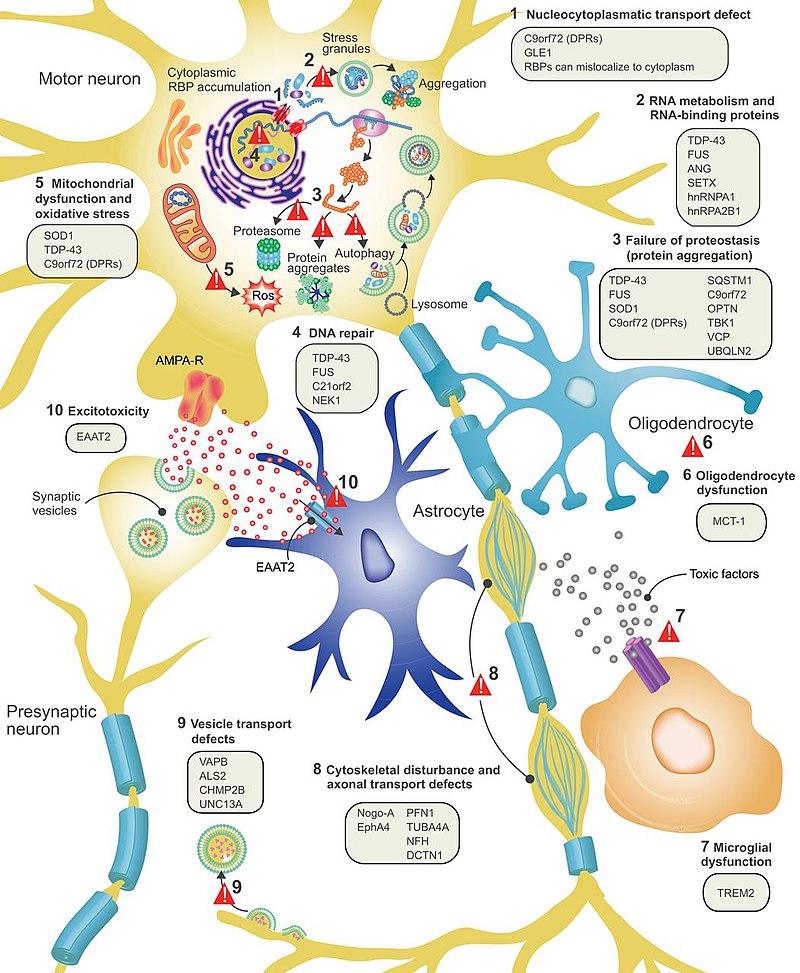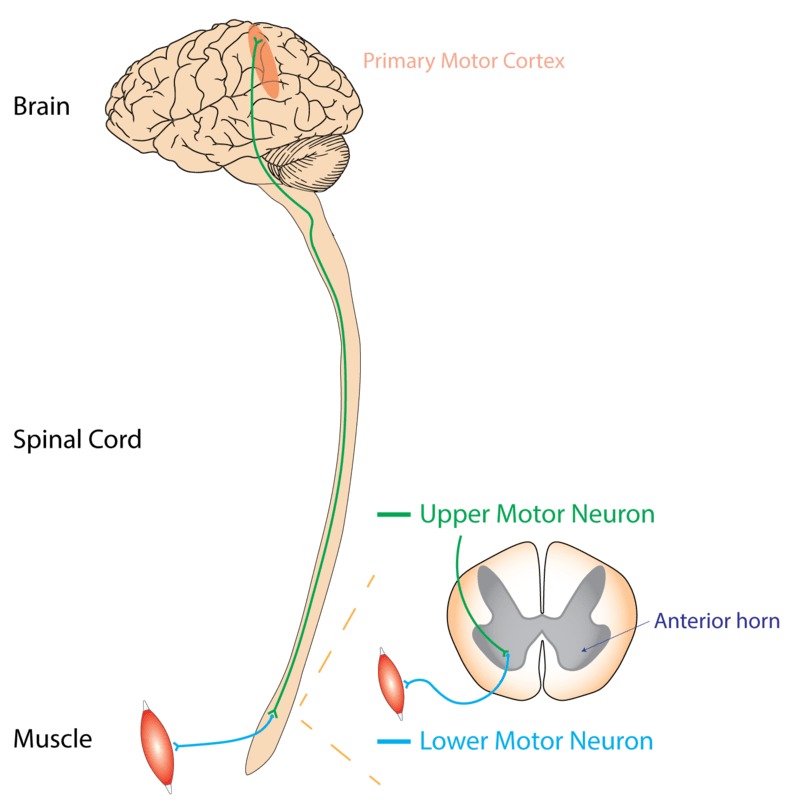What is the Difference Between ALS and PLS
Table of Contents
The key difference between ALS and PLS is that ALS is a type of motor neuron disease that results in the degeneration of both upper motor neurons and lower motor neurons, while PLS is a type of motor neuron disease that results in the degeneration of only upper motor neurons.
Motor neuron disease (MND) is a rare condition that affects the brain and nerves. This condition can cause weakness and gets worse over time. Moreover, motor neuron disease significantly reduces life expectancy and eventually leads to death. There are different types of motor neuron disease, and ALS and PLS are two of them.
CONTENTS
1. Overview and Key Difference
2. What is ALS
3. What is PLS
4. Similarities – ALS and PLS
5. ALS and PLS in Tabular Form
6. Summary – ALS vs PLS
What is ALS (Amyotrophic Lateral Sclerosis)?
Amyotrophic lateral sclerosis (ALS) is a type of motor neuron disease that results in the degeneration of both upper motor neurons and lower motor neurons. It is the most common form of MND. It accounts for about 60-70% of the total MND cases. Normally, in ALS, men are more commonly affected than women. In ALS, the upper motor neurons and lower motor neurons degenerate at the same time.
The signs and symptoms may include difficulty walking, tripping and falling, weakness in the legs, feet, or ankles, hand weakness or clumsiness, slurred speech, trouble swallowing, inappropriate crying, laughing or yawning, and cognitive and behavioural changes. ALS is inherited in 5% to 10% of people. For the rest, the cause is not known. The established risk factors for ALS include heredity (5% to 10%), age (40-60), sex (men affected more), genetics, smoking, toxic environmental exposure, and military service.

Figure 01: ALS
ALS can be diagnosed through electromyogram (EMG), nerve conduction study, MRI, blood and urine tests, spinal tap, and muscle biopsy. Furthermore, treatment options may include medications such as riluzole, edaravone, breathing care, physical therapy, occupational therapy, speech therapy, nutritional therapy, and psychological and social therapy.
What is PLS (Primary Lateral Sclerosis)?
Primary lateral sclerosis (PLS) is a type of motor neuron disease that results in the degeneration of only upper motor neurons. The cause of the PLS is not known. However, a rare form of PLS that affects young children and teens has been linked to a specific genetic mutation (ALS2 gene mutation). The symptoms of PLS include stiffness, weakness, and muscle spasm in the legs, which eventually progress to arms, hands, tongue, and jaw, slowed movement, tripping, clumsiness, difficulty with balance, hoarseness, slowed speech, drooling, difficulties in chewing and swallowing, mood lability, and breathing and bladder problems in rare cases.

Figure 02: PLS
Moreover, PLS can be diagnosed through blood work, MRI, electromyogram (EMG), nerve conduction studies, and a spinal tap (lumbar puncture). Furthermore, the treatment options for PLS are medicines for muscle spasms (baclofen, tizanidine), emotional changes (antidepressants), drooling (amitriptyline), physical and occupational therapy, speech and language therapy, and nutritional support.
What are the Similarities Between ALS and PLS?
- ALS and PLS are two different types of motor neuron diseases.
- Both are categorized under neurodegenerative diseases.
- Both ALS and PLS may have similar symptoms, such as weakness and clumsiness.
- They can be inherited and have a genetic basis.
- They are treated through specific medicines and supportive therapy.
What is the Difference Between ALS and PLS?
ALS is a type of motor neuron disease that causes the degeneration of both upper motor neurons and lower motor neurons, while PLS is a type of motor neuron disease that causes the degeneration of only the upper motor neurons. Thus, this is the key difference between ALS and PLS. Furthermore, ALS is associated with inherited genetic mutations in genes such as SOD1 and C9orf72, while PLS is associated with inherited genetic mutations in a gene such as ALS2.
The below infographic presents the differences between ALS and PLS in tabular form for side by side comparison.
Summary – ALS vs PLS
ALS and PLS are two different types of motor neuron diseases. ALS is responsible for the degeneration of both the upper motor neurons and lower motor neurons, while PLS is responsible for the degeneration of only the upper motor neurons. So, this summarizes the difference between ALS and PLS.
Reference:
1. “Amyotrophic Lateral Sclerosis (ALS).” Mayo Clinic, Mayo Foundation for Medical Education and Research.
2. “Primary Lateral Sclerosis (PLS).” Mayo Clinic, Mayo Foundation for Medical Education and Research.
Image Courtesy:
1. “ALS Disease Pathology and Proposed Disease Mechanisms” By Philip Van Damme, Wim Robberecht, and Ludo Van Den Bosch – “Modelling amyotrophic lateral sclerosis: progress and possibilities”; Disease Models and Mechanisms. 10 (5): 537-549. doi:10.1242/dmm.029058 PMC: 5451175 PMID: 28468939. (CC BY 3.0) via Commons Wikimedia
2. “UMN vs LMN” By Rcchang16 – Own work (CC BY-SA 4.0) via Commons Wikimedia
ncG1vNJzZmivp6x7pbXFn5yrnZ6YsqOx07CcnqZemLyue9ahmK1lmah6tbTEZpuinpaav6a6wp5km52krLKmuoyao6xlkaOxbrzLrGY%3D